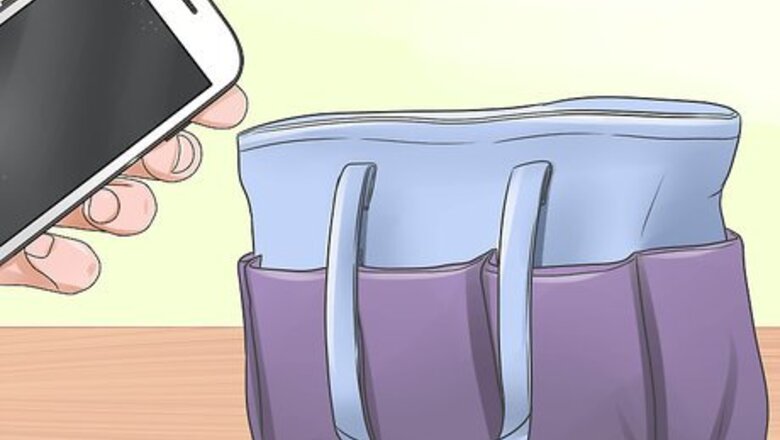
views
Packing Efficiently

Pack only what you need. Make a list, and check off items as you pack them so that you know exactly what you do and do not have. Separate your list into categories: e.g. clothing, electronics, food, toiletries, documents, and gear. Consider the weather, the duration of the trip, and the range of expected activities. Make sure that you will be prepared for every situation that you will reasonably encounter – but be careful not to over-pack. If you're going somewhere outdoors, make a list of gear as well as clothing. Most sleep-away camps provide a list of what to bring. Use this as a checklist, and take it with you to make sure you don't forget anything when it's time to go home. Remember that you can usually buy things at your destination, if you're going to a populated area. If you are taking your duffel to the woods, or to a less-populated area, then you'll want to lock down the absolute necessities. Nonetheless, try to keep perspective about how many things you truly need.

Pack heavier items first. You'll want to carry and store your duffel bag zipper-side up, so it's important to keep the large objects on the bottom. If you pack light or fragile things into the bottom of the duffel compartment, they will be crushed by the weight of the items above them. Place shoes and other flat non delicate items at the bottom of the bag. Roll all articles of clothing besides jackets and place them tightly on top of the shoes. Place the jackets on top of the rolled items and tuck it in on the sides.
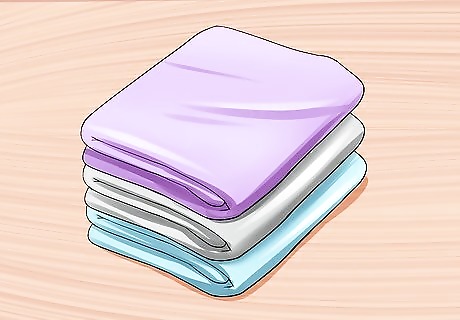
Pack to avoid wrinkling. Duffel bags are especially prone to compressing and creasing loose clothing. If everything is jumbled together, it can easily leave its mark on your garments. Try to arrange things into compartments, and fold in a way that limits creasing. Roll your clothing. This is generally considered the most space-effective method, as well as the best way to reduce wrinkling. Put certain types of clothing into specific parts of your duffel so that you'll know where to find them: for instance, put all of your socks together, and all of your shirts together, and all of your pants together. Fold smaller items of clothing between the folds of larger items of clothing. On the inside, fold the clothes that are least likely to crease. Then, work outward until you have a small, neatly-folded bundle. Try using "packing cubes" to partition the interior of your duffel. You can buy cubes with compression zippers to take down the bulk – and you can even vacuum-pack certain items that tend to spread out.
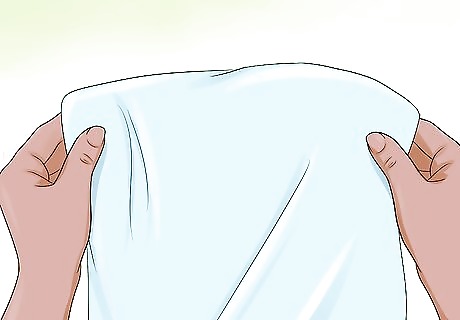
Stuff lightweight clothing items inside your shoes. This might include gloves, socks, undergarments, and other thin fabrics. In addition to saving space, this method should help your shoes hold their shape by reinforcing the walls. In general: for the sake of efficiency, pack anything light and compressible inside of anything heavy and hollow. Ladies: Put your bathing suit bottoms inside your bathing suit tops, and scrunch them up. For bikinis, hook the top around the bottom and compress it all together. For one pieces, just knead the thing into a bundle. You don't have to worry about bathing suits getting wrinkles, as they will straighten out when you swim.
Traveling with a Duffel Bag
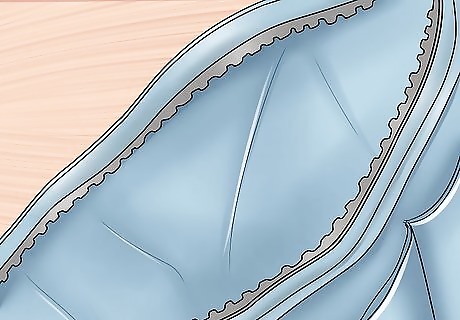
Face the zippered side up. This is especially important if you've packed the heaviest items on the bottom and the most fragile items in the center. The amorphous walls of the duffel will not provide much protection for the contents. Thus, you will need to need to handle your bag with particular care. Avoid stacking heavy items on top of the duffel, and try to keep it from taking too much wear.
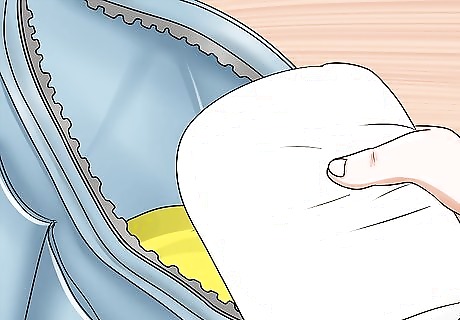
Keep need-to-access belongings near the top. It can be a pain to dig through the depths of your duffel bag just to find one item – especially if you are using a particularly large bag. If you think that you might need to access anything over the course of a given day, take care to arrange that thing in an easily-accessible position near the zipper. On the other hand: items near the top of the bag will be easy picking for would-be duffel thieves. Pack your most important and sensitive belongings deep within the bag, ideally inside socks or other containers.
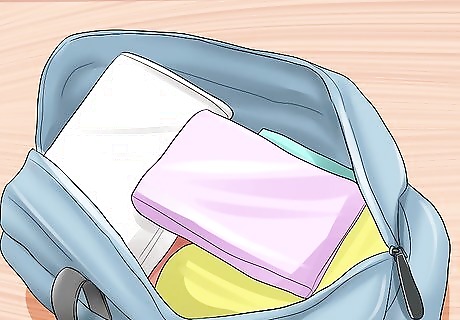
Repack when necessary. Over the course of a trip, you may find that your belongings become jumbled and mussed from the day-to-day demands of living out of a duffel. Sometimes, you will need to take heavy items from the bottom of the bag, which can disturb the carefully-layered strata of clothing and travel necessities. Do not hesitate to take everything out of your bag and reorder it! It won't take long, and the belongings within will be much safer from the wear and tear of travel. Consider taking everything out of your bag each evening when you arrive at your place of lodging. Then, take a few minutes to thoughtfully repack the bag in the morning before you leave. This way, you can ensure that the most important items for each day remain at the top of the bag.
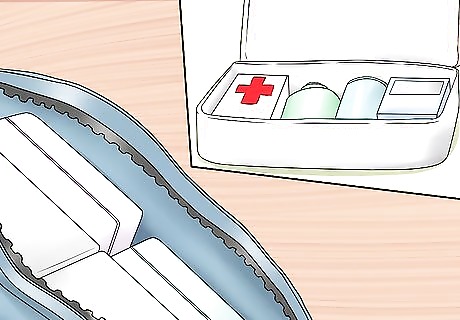
Compartmentalize. Consider using smaller, also-amorphous bags to divide up the space within your duffel. Use a bag for your toiletries, a bag for your food, and a bag for your dirty laundry. This way, you won't need to rifle through the main compartment each time you need something. You can take out the appropriate "compartment bag," then quickly sort out the needed item.
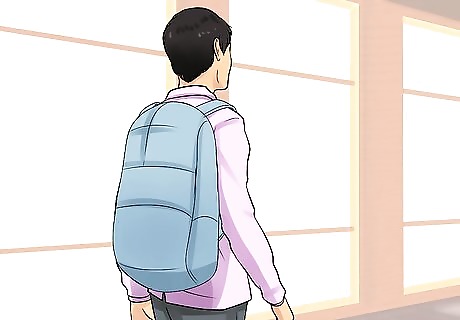
Bring a day-pack for day trips. If you'll be staying in one place and heading out for day-trips, take along a smaller bag so that you don't need to lug your duffel everywhere. Stuff the day-pack into your duffel. Each day, leave the large duffel in your place of lodging, and fill the day-pack with only the essentials. The day-pack can even function as a separate, modular "compartment" within the main duffel chamber. Store your toiletries, or your electronics, or your food in the day-pack to keep these items apart from the other contents of your duffel. The day-pack may be easier to pack into the duffel if it, too, is amorphous rather than rigid in structure. This way, you can pack the day-bag within and around your other belongings – it won't take up a commanding space.
Choosing a Bag
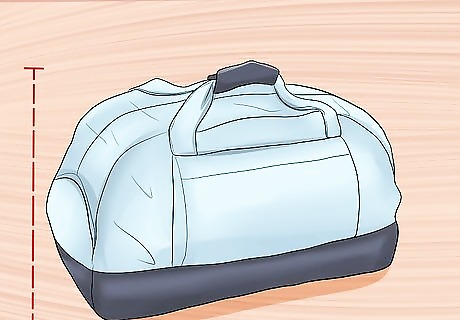
Buy a duffel bag of an appropriate size. Some duffels offer a huge capacity—as many as 130 liters (34.3 US gal) of space—while others are much smaller and more portable. Before you buy, consider what you'll be storing in this duffel bag, and where you'll be going. Check online and at local outdoor supply stores to track down the best bag for you. If you'll be using the bag mostly for quick weekend or overnight trips, then you may want a relatively small and portable model. If you'll be using your duffel to, say, transport two weeks' worth of garments and gear for an adventure trip, then consider looking into larger bags. Try checking thrift stores and used-gear websites for cheap, lightweight duffel bags. These bags are rugged and durable, so you should not need to splurge on a new model.

Pick your pockets. Some duffel bags are very simple: just the one large main compartment, with no frills or extra features. Other bags feature various inner and outer pockets to more easily separate your things. Remember that more volume means more weight!
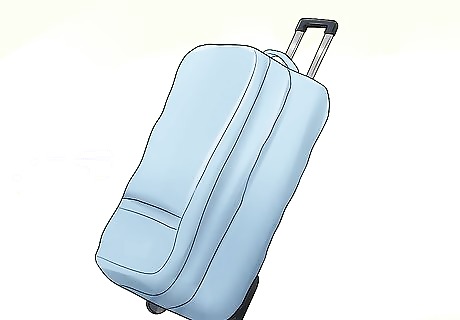
Consider using a rolling duffel bag. If you're bringing a large volume of belongings, then your duffel might be too heavy to comfortably carry for any length of time. You can buy a duffel bag with wheels, or you can install wheels yourself with a bit of DIY craftsmanship. Be aware, however, that wheels will add up to several pounds of extra weight. Many travelers choose duffel bags exactly because they are so lightweight – and most airlines enforce a size limit on both checked and carry-on luggage. Consider whether ease of transport is worth less room for your things.




















Comments
0 comment